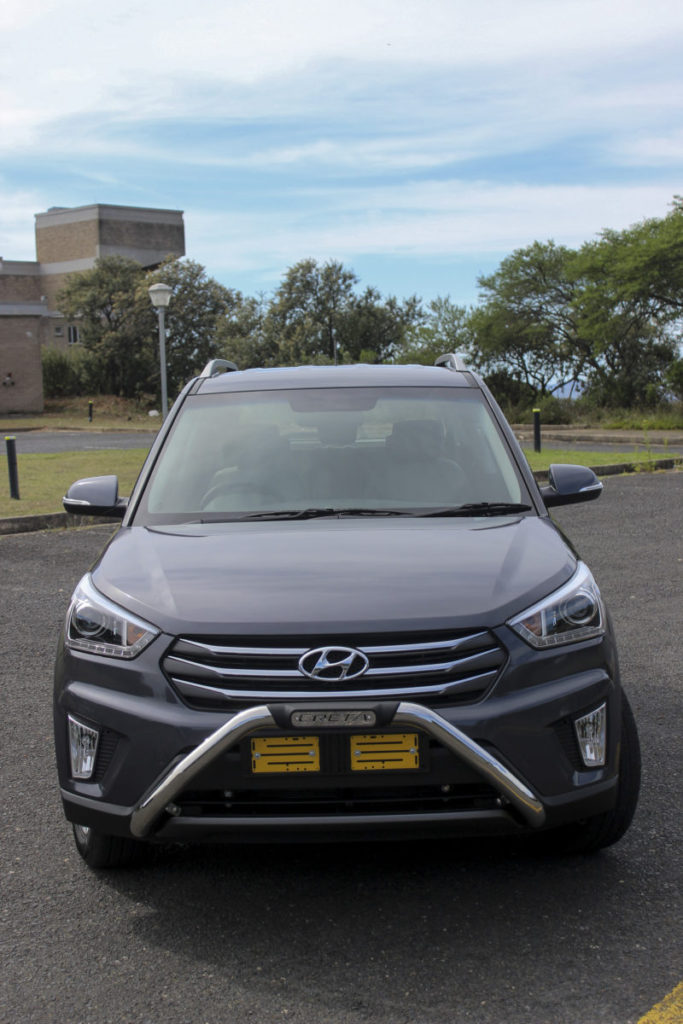Being a resident of a major South African city, I can completely understand the appeal of the urban cruiser. A mini-SUV that handle the day’s shopping, having being done just before dropping the kids off at rugby practice, all the while sipping petrol like it was a cup of tea (why South Africans don’t even think of a station wagon when looking for a car of that utility, I’ll never know). Hence, the South African market for such a car is a lucrative one, which, while people would argue that Ford kick-started with their Ecosport, I’d say was the Nissan Juke. But enough about the competition, let’s talk about the car in the picture.
Walking up to the Hyundai Creta, the first word I could think of was ‘robust’. With its angular shape and flat nose, this looked like a machine that could withstand anything that our roads can throw up. While the externals may be deemed a bit conservative for some, there is no denying that this is a good-looking and slightly aggressive car.
Prices for the Creta start at R319 900 with a choice of two engines available. A 1.6 petrol good for 90 kW and 150 Nm, and a 1.6 CRDi turbodiesel with 94 kW and 260 Nm. My car was the 1.6 Executive Auto, and while you have the choice of a six-speed manual transmission in this car, the diesel is only available with the six-speed automatic.
Hopping inside, I am presented with a vast interior. This is not a giant car, but the sizeable windows and tall roof have resulted in a cabin that provides ample room to breathe and every direction to look outwards. Add this to Hyundai’s ergonomics that are now good enough to rival any of the Germans. For this is a good quality interior, with everything where you’d expect it to be. The features list includes a reversing camera, Bluetooth and navigation (an infotainment system which does take time to get used to), and remote central locking. However, I was surprised by the lack of climate control, especially in this segment. Safety is covered with six airbags and EBD. In the back, for a man nearly two metres tall, leg space and headroom have been the benefit of the Creta’s box-shaped rear. And even with the presence of a full spare tyre, the boot’s volume of 402 litres can easily swallow up that daily shopping.
Ignition on, and off we go. Once around the city centre and the Creta seems to do well. Good suspension and a well-insulated cabin allow for a smooth and quiet drive. Steering is a bit soft, but is easy to adapt to, and overall visibility is a big plus. But once I had turned onto the N2, there were issues. Picking up to highway speeds, you feel that this car is under-powered. Being a naturally aspirated engine, one would and should be willing to floor the throttle when carrying the kids and luggage, and that will effect one’s fuel consumption. And when one does floor the throttle, be prepared for a slight delay in power. Though it does behave itself at times, this gearbox is not the quickest to respond. However, these issues are for the longer and more eventful journeys, and are not the main reasons you would buy this car.
Overall, the Creta is a decent package and has a decent price tag to match. As of current, Hyundai is the fourth-largest seller of new passenger vehicles in South Africa, with their hopes lying on this car to propel them to the third spot, and I can see that eventually happening. Just don’t let the soccer moms know about the station wagon.


